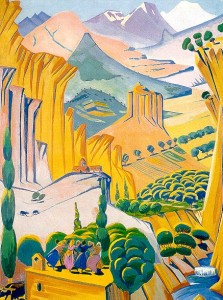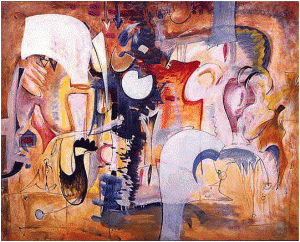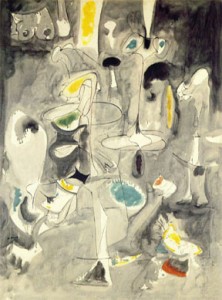Armenia is a land-locked nation in the region of Eurasia southwest of the Caspian Sea. Their history has been marked by innumerable invasions, with Armenia having only intermittent degrees of sovereignty from the full and fledging to all shades,variations and hues of the political palette. Vulnerable from the north (Russians), the east ( Mongols and Turks) , the west (Greeks and Romans) and from Semitic peoples to the south. The time line of the Armenians has been unfortunately characterized by sparse and patchy periods of boring and dull moments punctuated by long spells of utter terror. Armenians also suffered their own unique and tragic version of the Final Solution.This was immortalized in the Franz Werfel’s ”The Forty Days of Musa Dagh” which seems to draw parallels with the plight of the Maccabees against the Romans and their heroic stand at Masada.
In some respects they resemble the landlocked fate of Poland and their subjection to larger outside powers. Also, to a certain extent, to the Kingdom of the Khazars and their destiny as written by Arthur Koestler in his ”Thirteenth Tribe”. The Turkish pogroms of 1894-96 were in the same spirit as those of other vulnerable minorities in Eastern Europe resulting in the same modus- operandi of hanging, burning, rape, and torture endemic to civilized, religious and god fearing peoples of that era. There is a historic both complex and rich with enough second helpings of suffering and misery to have created an Armenian artistic identity.
Does Amenian art have an ethnic or national identity that makes it particularly Armenian either individually or collectively? Armenian art of the 20th century to today has been characterized by many of its artists living outside or born outside Armenia in a diaspora. A larger issue is whether a theoretical link exists between artistic creativity and ethnicity? Not impossible,but somewhat tenuous, and not easy to provide proof. There is a pre-supposition of an identifiable Armenian art; a context that exists historically but in terms of purity of ethnic origin somewhat dubious. The countless invasions by many from all directions from the global gene pool left their DNA trademarks among the Armenians. As an experienced based collective memory, an identity certainly could be valid, but then the uniqueness of the experience per-se would have to be categorized and graded, thus substantially neutering the rich and complex elements that make the spirit viable and able to reproduce itself across the spectrum of the here, the now and the urgent immediate.
This is the dilemma of grouping artists and art by country of origin. It arrives at a collection of artists with no shared traits except ethnic origin. And in the diaspora what is to be made of partial Armenians or acculturated and assimilated Armenians? Was William Saroyan an Armenian writer? if he had a name like Cardozo he would sound Portuguese or is Gary Kasparov considered a half Armenian accomplishment or a mixed blessing? Contemporary abstract artists of ”Armenian” paintings, have no reference to known reality or Armenia in particular. Arshile Gorky, an Armenian refugee to the U.S. is considered by some to be the founder of American abstract surrealism yet his influences of Picasso and Cezanne and other old and modern masters is acknowledged. Martiros Saryan is considered the greatest artist of Armenian heritage yet his debt to Gaugin and Cezanne is undeniable.
The question is what are the limits and sustainable dimensions of national art before it becomes nationalistic and static. In fact no national art is easily defined and the search for common traits can be elusive. Leon Tutundjian is widely respected as one of the original Surrealist painters in France in the 1920’s. His work clearly reproduces the horrors of his fleeing from terror in his youth and an inner longing to forget a tortured memory.
Between the 17th and 18 th centuries there was a transition in Armenian art towards a form of international ecclecticism as Christian medieval manuscript illumination transformed into canvas painting, frescoes and murals. ”The artist was no longer a Priest.” Certainly in modern Armenian art there are common ethnic bonds such as a perceived awareness of national traditions. In the post genocide period there is often an intensity which borders on the disturbing as well of themes of a longing to escape often brought on by a frightening collective memory of massacre and loss. There is a certain flight to fantasy where nature is intentionally distorted or there i
spectrum of painting oriented towards a precision and exactness of geometric extraction.Modern Armenian art often shows qualities of family unity, anxiety, anguish, loss and remembrance. The color palette is more often deep, rich and brilliant reflecting the earlier manuscript illuminations flecked with some oriental touches from the eastern tapestry and textile traditions. In the last analysis they are artists who cannot return home but can contribute mightily toward a new collective artistic identity based on different points of reference.









 COMMENTS
COMMENTS